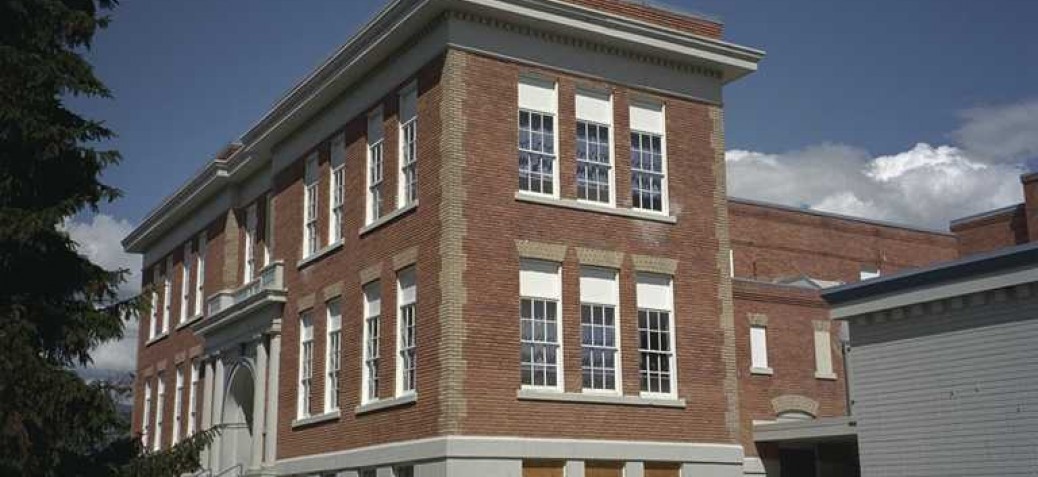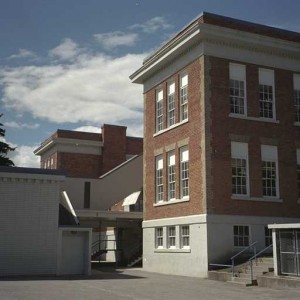Central Elementary School
Place Description
The historic place is the imposing and classical two-storey, red brick Central Elementary School, built in 1913 at 1825 Richter Street in Kelowna's South Central Neighbourhood.
Heritage Value
This building, still the most impressive school building in Kelowna, has significant heritage value as a result of both its high quality, Beaux-Arts architectural presence and its role as a symbol of a progressive and stable public education system in the community.
The new school was required because of the rapid population growth in pre-WWI Kelowna, which had already overcrowded the latest public school opened in 1910 (see 1633 Richter Street).
Designed by architect George E. Nobles of Lethbridge, and built in 1913 by contractor Alfred Ivey, Central Public School was intended to impress. It adopted classical features of the Neoclassical and Georgian Revivals, set within the formality of Beaux-Arts planning. The cost of the two-storey brick building and its furnishings was a high $75,000. It was set on a raised earth mound on a 4-acre site, the broad front steps flanked by massive columns. It had ten classrooms and an auditorium. The latest amenities were installed: electric lights, running water, and toilets and lavatories in the basement. (There must have been some distrust of such new-fangled devices, since the 1914 Fire Insurance Map shows that the more traditional outhouse buildings were located in the back field, one for each sex, reached by wooden boardwalks from the building.)
Construction was completed in 1913 (as noted above the main door) and classes commenced in January 1914. The school was officially declared open on 20 January 1914 by Price Ellison, the Provincial Minister of Finance and Agriculture, in a ceremony attended by Mayor J.W. Jones, School Board chairman J.A. Biggar, and a large audience of pupils and townspeople. It was evident that the City and the Province appreciated the significance of the new building.
DeHart Avenue Primary School was opened at the east end of the grounds in 1928 and the present building became Central Elementary School. An administration office was added at the rear between the two wings in 1956, and in 1964 an activity room at the rear, connected by a breezeway. Meanwhile the original upstairs auditorium had been converted to three classrooms, and the girls'' basement playroom was now the lunchroom and library, while the boys'' playroom was now a temporary classroom.
The building is still in use, having recently been the French-immersion primary school for some years. It now houses several special programs of School District 2
Character Defining Elements
- Formal Beaux-Arts-inspired plan, with a recessed central wing, projecting side wings, and columned entries on all axes
- Classical treatment of detail, owing something to the Neoclassical Revival and Georgian Revival, see in features such as the two-storey frontispiece, featuring free-standing columns, attached pilasters, and a pediment; and in the quoins, entablature, arched doorways on the side wings
- Red brick walls with grey stone trim and terra cotta details
- Concrete block foundation
- Symmetrical 5-bay front elevation with a central entrance, and windows in groups of 3/4/2/4/3
- Strong demarcation of the foundation and roof in the horizontal bands and cornice
- Two wings extend forward and back, forming an H-shaped plan
- Wood double-hung windows, with six-over-six panes, stone lintels, and stone sills;
- Brick soldier courses seen at some window lintels
- School yards, typical fields, playgrounds, and landscaping





